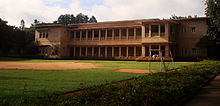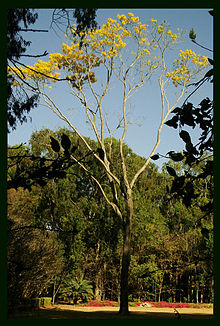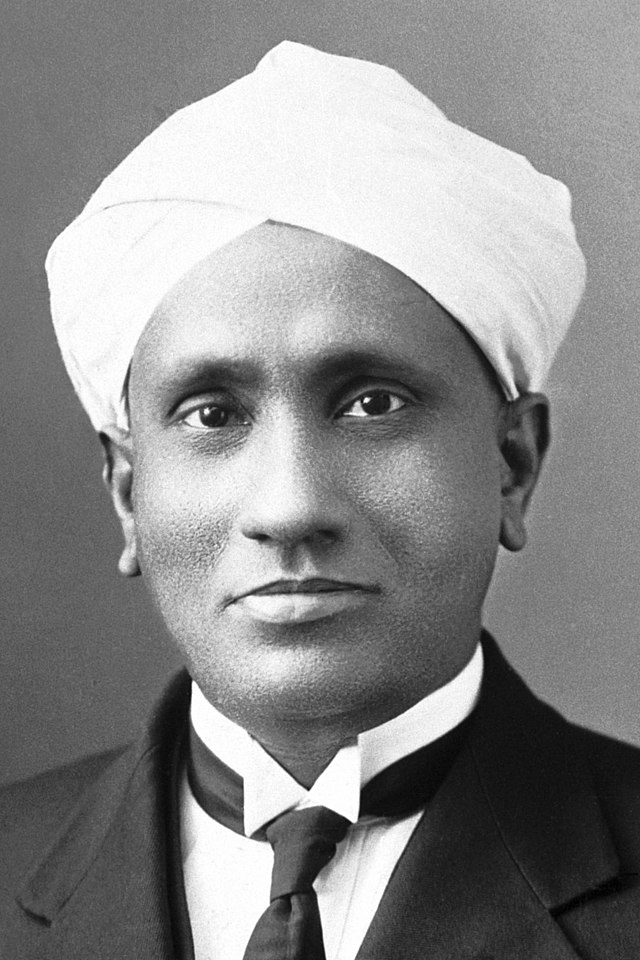India is celebrating 135th birth anniversary of C.V. Raman on Tuesday the 7th November 2023. All the students of science in our country are obligated to remember him on this day and pay rich tributes to the memory of the most outstanding Physicist India has ever produced. We are duty bound to refresh our memory with his biography and scientific achievements on this momentous occasion. I deem it as a great honor and take pride in sharing with the readers that I got a wonderful opportunity to carry out research at Raman Research Institute, an institution founded by C.V. Raman, for my doctoral research.
There is a saying in science- Nature can only be described but cannot be explained. Like several extraordinary natural phenomena that we observe in nature, Raman can only be described but cannot be explained. C.V. Raman was a rare combination of honesty, transparency, creativity and extraordinary passion for doing science. His devotion to science cannot be described in words.
C.V. Raman, a towering personality in Indian science and an experimental physicist par excellence was the first scientist to win Nobel Prize in science not only for India but also for Asia. Another remarkable and inspiring fact about Raman is that he is the only scientist to have won Noble Prize in science for the research work carried out completely in Indian laboratories with low cost equipments.

Chandrashekar Venkata Raman was born on 7th November 1888 in the hamlet of Thiruvanaikkaval near Thiruchanapalli in the present state of Tamilnadu. His father was R. Chandrasekhar Iyer and mother Parvathi Ammal. He was born as the second child to his parents. His father Chandrasekhar Iyer was a teacher in a local high school. Though the family had modest means, but that did not deter Chandrasekhar Iyer from providing English education to his sons. When Raman was three years old, his father accepted the post of Lecturer in Physics and Mathematics at A.V. Narasimha Rao College at Vishakapatnam. As Raman’s father was a Lecturer in Physics and Mathematics, he had a good collection of books on Physics, Mathematics and Philosophy. This encouraged Raman to develop interest in science.
Raman was a brilliant student right from his school days. He passed matric examination at the age of eleven and F.A (equivalent to present PU) at the age of thirteen both with top honours. The brilliant performance by Raman got him scholarship. He joined Presidency College in Madras, an institution set up by British to provide quality higher education for aspiring students in South India. He passed is B.A. at the age of fifteen with distinction winning gold medals in English and Physics. He passed his M.A. examination at eighteen in 1907. Raman, even as a student, had acquired deep knowledge of science and his professors found him extraordinarily intelligent that they exempted Raman from attending all the science classes.
In 1906, Raman published his first research paper in the highly rated and prestigious journal titled “ The Philosophical Magazine”. While measuring the angle of a prism using a spectrometer in the college laboratory, Raman observed diffraction bands. He made a detailed study of this bands the results of which formed the subject of his first publication. With this publication, he drew the attention of many of his teachers and peers. In the same journal, he published his second paper on a new experimental method of measuring surface tension.

In 1906, after his M.A, on the advice of his professors, he appeared for civil services examination and secured first rank. In 1907, at the age of 19, he was appointed as Assistant Accountant General and posted to Calcutta. Before proceeding to Calcutta to take up the new assignment, he married Lokasundari Ammal who was then thirteen years old. The young couple went to Calcutta in 1907.
His posting to Calcutta opened up new vistas in the career of Raman. Though he took up the job of Assistant Accountant General, his indomitable spirit for doing science had not subsided. One morning, while he was on his way to work, he noticed a board which read “Indian Association for Cultivation of Science” on a building located at Bowbazaar Street. It really rekindled his interest in science. In the evening, on his way back, Raman knocked on the door. A worker by name Ashutosh Dey opened the door and took Raman to Amruth Lal Sircar, Honorary Secretary of the Association. During the meeting with Sircar, Raman expressed his desire to continue his research at the centre. Amruth Lal Sircar happily handed over the keys to Raman. He promptly resumed his scientific activities.
Raman’s devotion and commitment were extraordinary and unparalleled. Though he was newly married, he used to spend most of his time in the office and laboratory. His routine was something like this-morning 5:30 to 9:30 am engaging in research, returning home at 9:45, leaving for office after bath and quick breakfast. Again in the evening, going directly to the laboratory and doing research till about 10:00 pm, on Sundays spending the entire day at the association.
Initially C.V. Raman, worked on Indian stringed and percussion musical instruments, western drums, singing flames, physics of musical sounds and whispering galleries. He published the results of his research work in the Journal titled “Bulletin of Indian Association” started by Raman himself. He became a world authority on sound and musical instruments.
His brilliant research work was noticed by Sir. Asutosh Mookerjee, the then Vice-Chancellor of Calcutta University. He offered Raman the Palit Chair of Physics. Raman’s Love for physics was so intense, he decided to accept the offer for a salary less than what he was drawing. Raman became a fulltime researcher.
In 1921, A major development took place, perhaps, that led to the discovery of Raman Effect.
On Sir Asutosh Mookerjee’s insistence, Raman travelled to England to participate in the University Congress held at Oxford. He got on opportunity to interact with top scientists of England, J.J. Thomson, Rutherford, Bragg and others. During his short stay in England, he conducted research on St. Paul’s Cathedral’s whispering gallery and published two research papers – one in Nature and second one in the proceedings of the Royal society.
While returning to India on sea voyage, he enjoyed the grandeur of the Mediterranian sea particularly its blueness. He started thinking deeply on the blue colur of the sea. Lord Rayleigh had stated that the dark blue colour of the sea was due to reflection of the blue of the sky. Raman disproved this idea by conducting a simple experiment with a nicol prism that he had carried along. At the Brewsterian angle, he thought that he could quench the reflection of the sky. But even at the Brewsterian angle, he found that the surface of the sea was glowing with blue colour. This made Raman to conclude that the blue colour of the sea was due to scattering of light by the water molecules.
In recognition of significant contribution made by C.V. Raman, he was made a Fellow of the Royal Society, London in 1924. After the felicitation held in honour of Raman, Mookerjee asked Raman “what next”. Raman, unhesitatingly, replied “Nobel Prize”. That was the self-confidence that Raman had about the quality of research that he was into.
After his return to his mother land, he conducted investigation on scattering of light by liquids. As a consequence of this, Raman Effect was discovered on February 28th, 1928. In simple terms, Raman Effect can be explained as follows: when monochromatic light is made to pass through a transparent medium, the scattered light, in addition to the incident frequency, consists of radiations having frequencies both higher and lower than the incident frequency. Another interesting fact about the discovery of Raman Effect is the announcement of the effect was made by Raman himself on March 16th in a function held at Central College, Bangalore. The hall is named as “Raman Hall” which is presently attached to the Department of Physics, Bengaluru City University. Raman published his monumental discovery in the journal titled “Indian Journal of Physics” started by Raman himself. Prof. R. W. Wood while commenting on Raman’s discovery said that the study of the phenomenon of light scattering is one of the most convincing proofs of the quantum theory of light. C.V. Raman was awarded Nobel Prize in 1930 for his seminal and exciting work on light scattering. India won the first Nobel Prize in science. C.V. Raman earned the distinction of being the First Asian Scientist to win Nobel Prize in Science.
Raman had supreme self confidence in winning the Nobel Prize. Generally, Nobel Prizes are announced in the month of October every year. The prizes are given away in the month of December. It is said that Raman had booked two tickets to go to Stockholm in the month of July itself. That was Raman, a man of immense self confidence.
In 1933, he became the Director of Indian Institute of Science, Bangalore. As the Director, he demonstrated that he was not only a great scientist but also an able administrator. He was a good orator too. Thousands of people used to attend his lectures. He established Indian Academy of Sciences in 1934, which has retained its prestigious status in Indian Science even to this day.
C. V. Raman had an ardent desire to establish a research institute of his own and carry out scientific research without interruptions after his retirement from Indian Institute of Science. When he shared his dream with the Maharaj of Mysore, he donated ten acres of land near the present Mekhri Circle. Raman Research Institute was founded in 1948. He carried out research independently at RRI and did yeoman service to the growth of Indian Science till his last breath in 1970.
Apart from scattering of light, Raman did research on variety of topics such as colours of feathers of birds and butterflies, diffraction of light by ultrasonic waves, thermo-optics, magneto-optics, crystals, minerals, pearls etc. In Raman Museum, we can find huge collection of minerals, crystals and pearls, some of them collected by Raman himself during his visits to other countries. Several honorary doctorates and recognitions were awarded to C.V. Raman by national and international institutions.
To Raman, scientific research was the fulfillment of an inner desire. Science was a part of his body, mind and soul. He used to derive a lot of pleasure in doing science.
It would not be an exaggeration if I say he ate, drank and breathed science. His approach to science was one of creativity, passion and simplicity. In recognition of his contribution to scienc, he was awarded Bharatha Ratna, highest civilian award, by the Govt of India in 1954. He breathed his last on November 21st. 1970. He has left an indelible mark in the pages of history of science.
In order to commemorate the discovery of Raman Effect, National Science Day is observed in our country on February 28th every year.
We fondly hope that with inspiring works of Raman, enthused by his obsession to science, another Raman would appear in the field of Indian Science in the days to come.






What a great piece of article! It’s really brilliant sir
Very interesting and informative. It is indeed our duty to remember such a great scientist on the occasion of his birth anniversary. Many thanks to Srikanta sir for this informative article
We really didn’t know this much about our own great scientist C V Reman.
Thanq Dr Srikanta
Dear sir Namasthe.
Thank you very much for sharing the finest article on C V Raman and his contribution in developing science research ambience in India. Many of the facts mentioned here, I never heard or read before. As usual your lucid writing style makes to comprehend facts and things easy. Thanks once again sir.
It is overwhelmingly lucid and navigates effortlessy from one idea to the other. It is written with language excellency and accuracy. Loaded with facts and hughly
*Facts and highly informative.
Very Nice Presentation. Highly Informative.
Dr. Shrikanta’s article written on the life and contribution of ‘Sir C. V. Raman’ is really very much informative and an addition to the knowledge. Being Indian we should be very proud that first Noble Prize in Science is received by Bharatratna C. V. Raman. Great article..
Very informative sir
Highly useful and informative.Thanks a lot for sharing your brilliant article
Super information
As broadly explained by Srikanta Sir, Sir. C V Raman is inspirational for all generations. RRI is definitely keeping the spirit of his research alive in many physicists(https://www.rri.res.in/).
Thank you so much Srikanta Sir for collecting so detailed information, will definitely helping to know more about the legacy of such great people.
Excellent article to celebrate the birth anniversary of Sir CV Raman sir👏🏻👌👌
Students need such articles to enrich thier knowledge and create awareness about the achievements of our great countrymen👍👌👌
Thank you sir
Thank you all for your encouraging comments. He is truly an inspirer to all physicists both young and old.
Thank you all for your encouraging comments. He is truly an inspirer to all physicists both young and old.